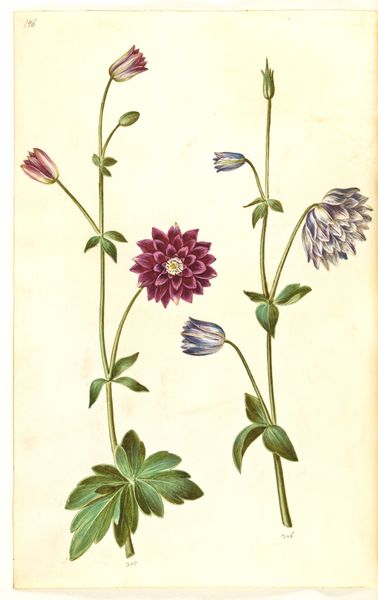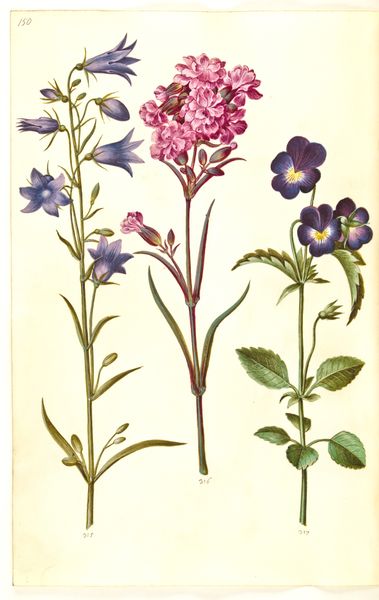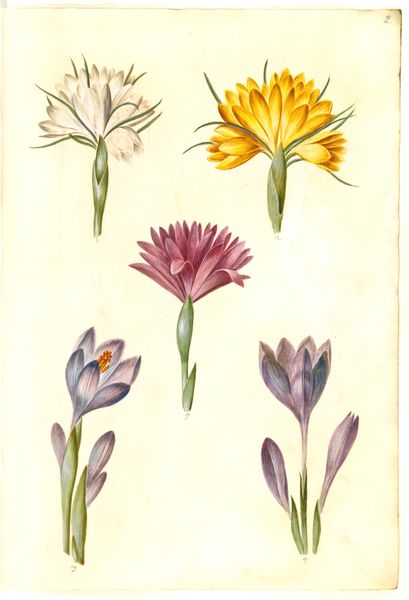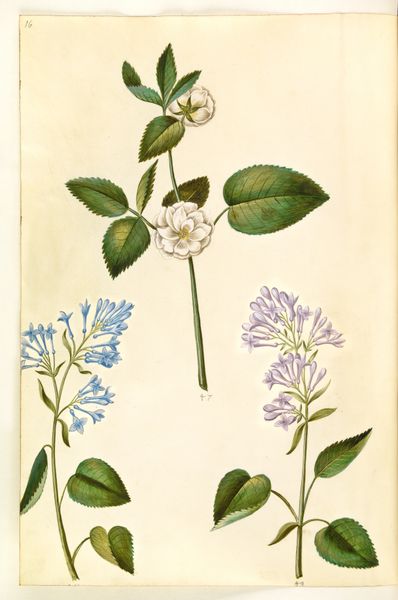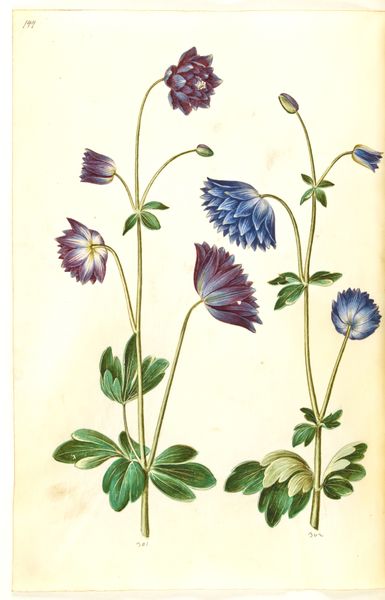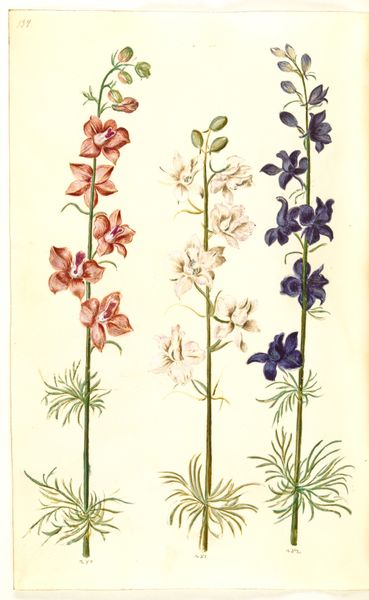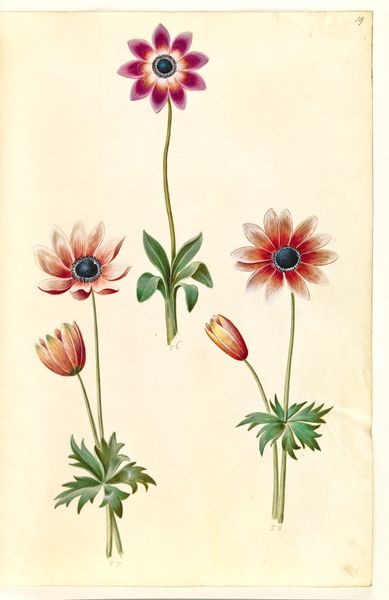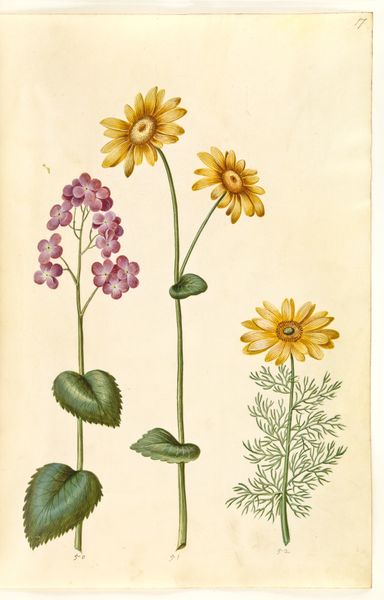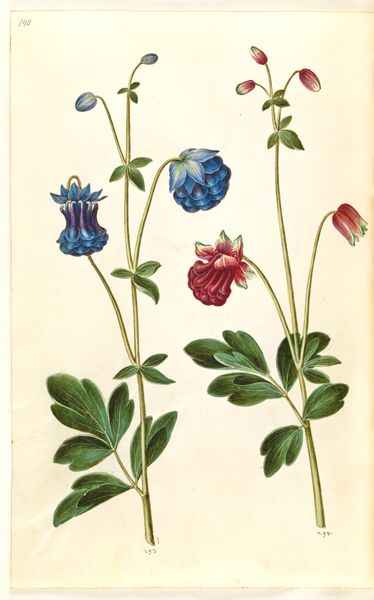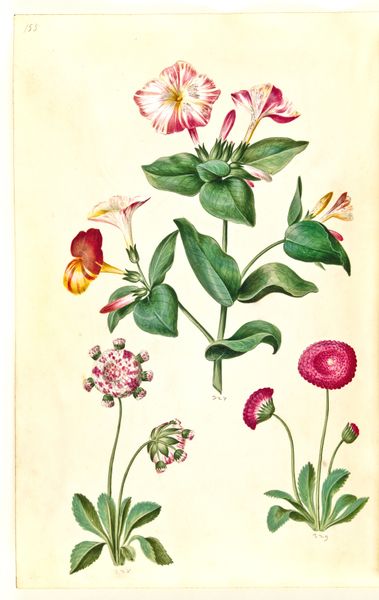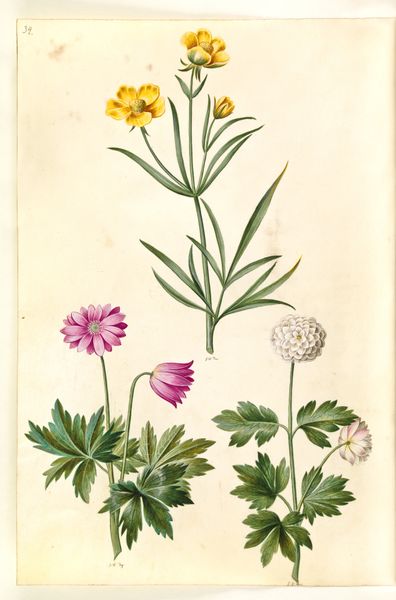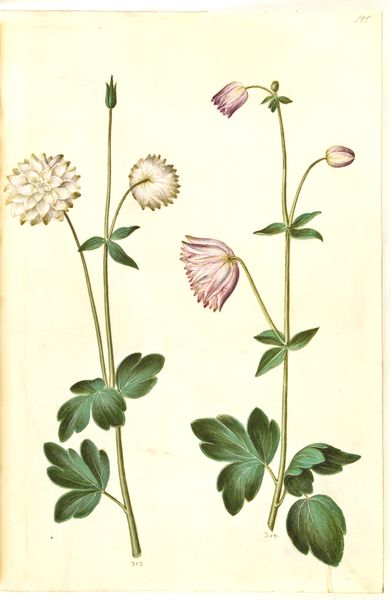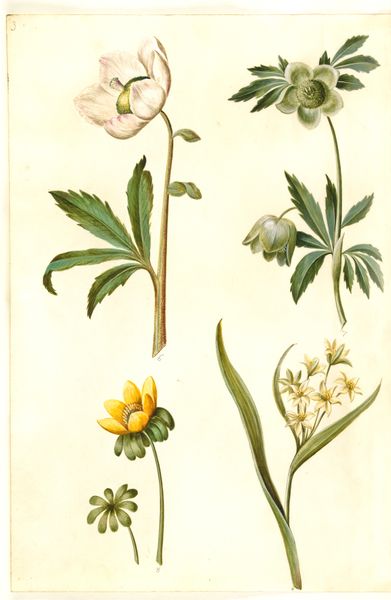
Saponaria officinalis (almindelig sæbeurt); Convolvulus tricolor (jomfruskørt); Helianthus (?) (solsikke-art) 1635 - 1664
0:00
0:00
drawing, gouache
#
drawing
#
gouache
#
history-painting
#
botanical art
Dimensions: 375 mm (height) x 265 mm (width) x 85 mm (depth) (monteringsmaal), 358 mm (height) x 250 mm (width) (bladmaal)
Curator: Right now, we’re looking at a botanical study made with gouache and drawing media between 1635 and 1664. Hans Simon Holtzbecker meticulously captured Saponaria officinalis, also known as common soapwort, Convolvulus tricolor—morning glory—and a sunflower, probably a species of Helianthus. Editor: It strikes me as an almost dreamlike presentation, wouldn't you say? The flowers float serenely on that blank page, not tethered to the earth, glowing with a quiet inner light. The precision is breathtaking but doesn’t sacrifice a kind of hushed reverence. Curator: Holtzbecker was court painter to Frederick III, King of Denmark and Norway. The king commissioned him to illustrate the lavishly produced Flora Danica, documenting all the plants native to the kingdom. This was during a time of immense European interest in botany and natural history. Editor: And each flower here, lovingly rendered. I see the gentle blush on the soapwort, the deep-purple starburst in the morning glory. It is more than just cataloging; it is really a hymn to each bloom’s delicate perfection. What power and fragility. Curator: Indeed. These images served both scientific and symbolic purposes. Royalty frequently commissioned such works as expressions of their power over the natural world. But consider also the incredible scientific rigor alongside the symbolism of these blooms at the time they were created. Editor: Well, even without knowing the background, there's something captivating about seeing them clustered like this, seemingly outside of space and time. It calls to mind our attempts to freeze beauty. To somehow grasp at what is impermanent. Curator: Exactly. Holtzbecker offers us more than a catalog; he gives us a space to contemplate, where nature is captured at a fixed moment. It's easy to consider how art is both a historical record and a way into our feelings and desires. Editor: I am truly in awe; looking more closely I am newly convinced that this work transcends its historical context. I imagine the artist, with a heart as light as a bee, capturing the perfect hue and each graceful shape of life at the moment of unfolding. It’s a fleeting moment we’re lucky enough to behold forever, on paper.
Comments
No comments
Be the first to comment and join the conversation on the ultimate creative platform.
